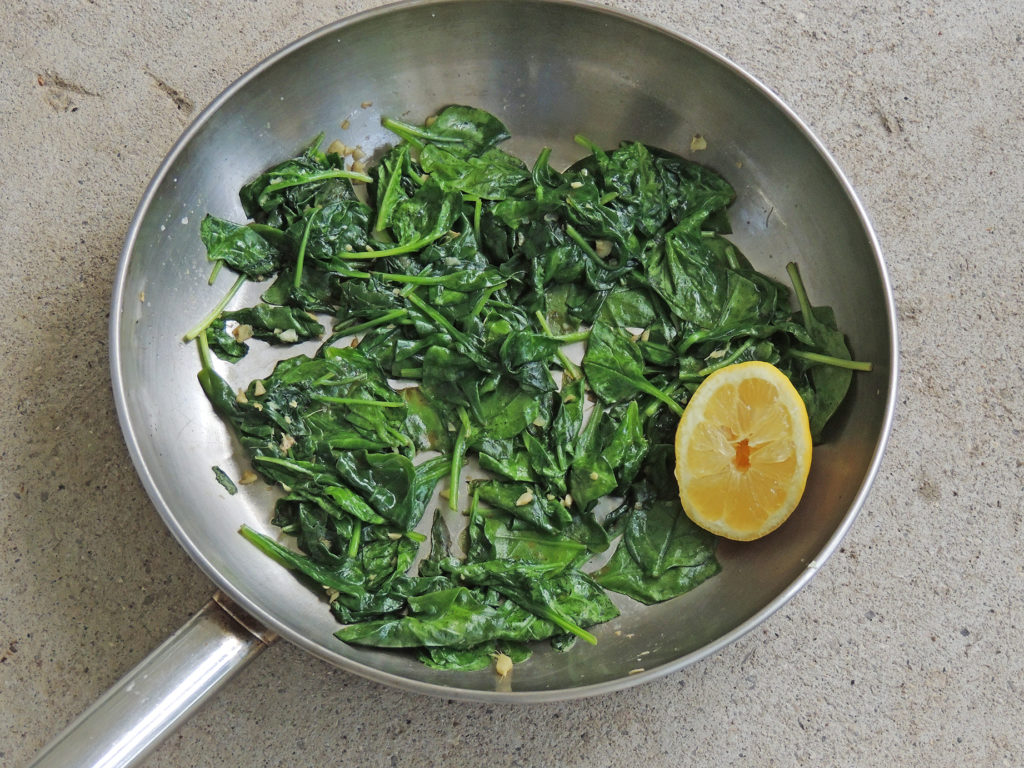Cooking With Greens
Why You Should Eat Your Greens

Besides the fact that greens are high in vitamins including C and E, minerals including calcium, beta carotene and fiber, they are just plain delicious! Fresh greens, from kale to spinach, are available year round. Read on for information, suggestions, and recipes.
Prepping Greens
Wash greens thoroughly as they can be gritty and have a few insects (except boxed baby greens; those are already washed.) To prepare most greens, tear or cut each leaf from its thick center stems; discard stems (except for chard stems which can be cooked separately.) Remove the stems by holding the leaf in your left hand and stripping the leaf down with your right hand. Or use a chef’s knife to quickly slice the leaf along the stem. Then chop or cut into strips as the recipe calls for.
Swiss Chard
Chard has deep green color with shiny leaves and stems. Chard stems can be white, red, yellow or orange. The thick, fleshy stems are a somewhat tough so they are usually cooked separately. Chard is good stir-fried, braised in broth or water, steamed or boiled. It’s good in soups or to use as a wrap for rolls. Chard is a good source of beta-carotene, vitamin C, and B vitamins.
Spinach
When cooking spinach bunches, wash well and remove the tough stems first. Baby spinach is tender and great for fresh salads, a quick stir fry, or creamed. Spinach is high in iron, potassium, sodium and magnesium. It cooks very quickly, in a minute, so be careful not to overcook. It also cooks way down so be sure to get enough for your recipe.
Kale
Kale is a bitter green and is excellent braised, steamed, sautéed and stir-fried and can be added to soups, stews, pastas, and baked dishes. Kale leaves should be crisp and free of discolorations. Remove stems before cooking. Kale can be cooked for a short time but it will be chewy. Longer cooking will make it tender. Kale is a great source of vitamin A, iron, calcium and chlorophyll.
Collard Greens
Collard greens are a member of the cabbage family and are a common cooking ingredient in the south. The traditional way to cook collards is to boil or simmer slowly with a piece of salt pork or ham hock for a long time (this tempers the tough texture and smoothes out the bitter flavor) until they are very soft. When buying collards, choose dark green leaves with no wilting or yellowness. Collard greens will cook down, so purchase enough for your recipe. Fresh collard greens may be stored in a plastic bag in the refrigerator for up to 5 days.
Bok Choy
Bok choy is a Chinese cabbage with white stalks and dark green, crinkly leaves. The stems have a mild cabbage flavor and the leaves are very tender when cooked. Bok choy is a good source of vitamin C, folate and fiber. To prepare , cut off the bottom of the bunch, separate the leaves, and tear or thinly slice greens. Slice the stalks into thin strips and braise or stir fry for 3–5 minutes, then add the greens.
Recipes
Braised Collards with Tomatoes
Coconut Milk Braised Greens
Greens with Beans and Tempeh
Kale and Spinach Dip
Mashed Potato Kale Cakes
Summer Greens with Sausage
Bok Choy and Buckwheat Noodles in Seasoned Broth
Chicken Soup with Rice and Kale